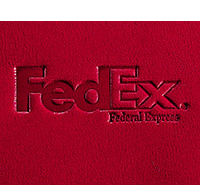

Finishing
Foil Stamping
Foil stamping is the application of foil, a special film-backed material, to paper where a heated die is stamped onto the foil, making it adhere to the surface leaving the design of the die on the paper. Foil stamping can be combined with embossing to create a more striking 3D image. (See “Foil Embossing” below
(From: http://desktoppub.about.com/od/foilstampemboss/g/foilstamping.htm)
Embossing
 Embossing is simply an image or design pressed into paper by a metal
die. Think about the intricate seal of a state office that says
"official business" or the luxurious raised lettering on the packaging
of your favorite perfume or cologne. Those are a few examples of
embossing. (These are dies for classic embossing embellishments.)
Embossing is simply an image or design pressed into paper by a metal
die. Think about the intricate seal of a state office that says
"official business" or the luxurious raised lettering on the packaging
of your favorite perfume or cologne. Those are a few examples of
embossing. (These are dies for classic embossing embellishments.)
Blind embossing
Blind embossing can be artwork, letters or logotypes that has been pressed into paper under pressure using a die. It is, in effect, a raised impression that takes on the shape of its die. For that reason, it is more commonly used to complement printing, as in the case of a company logo or symbol, wherein the full name, address, phone, etc., is printed in some form, i.e., offset or engraving.
Embossing and debossing
Embossing raises an image above the paper surface while debossing (the exact opposite) lowers an image below the paper surface. It is a very tactile process and adds a large measure of elegance to a variety of printed materials. One word of caution here is appropriate when using embossing for stationery. If you intend to laser print your letterhead, for example, you must understand that embossed areas will flatten to some degree and can even cause mis-feeds and jambs in some printers. Inkjet printers will usually run these items without many problems.
Embossing effects
The effects of embossing vary according to the stock selected. Embossing white or lighter papers (such as 24 lb bonds and 70 lb texts) produces more subtle, less obvious results, while darker colored or heavier textured papers produce more dramatic results, with very clearly defined shadow areas.
Designing embossed jobs
When designing elements to be embossed you should allow sufficient spacing around letters and artwork since the process actually stretches paper around every shape and crevice. For the same reason, try to keep your typeface selection confined to sans-serif characters or larger type faces; also keep in mind that embossed images will shrink slightly from original art to finished product, so you may want to increase artwork and type about 5 percent.
 All
of the above applies to foil embossing except that color is added, in
the form of metallic or pigment foil. This is accomplished in several
ways, one of which involves the use of a "combination" die that allows
the embossed area to be foil stamped and raised almost simultaneously.
This type of die is normally hand tooled from solid brass and is fairly
costly. A less expensive approach would be to flat stamp the image and
then register emboss it using copper dies.
All
of the above applies to foil embossing except that color is added, in
the form of metallic or pigment foil. This is accomplished in several
ways, one of which involves the use of a "combination" die that allows
the embossed area to be foil stamped and raised almost simultaneously.
This type of die is normally hand tooled from solid brass and is fairly
costly. A less expensive approach would be to flat stamp the image and
then register emboss it using copper dies.
Offset/emboss combinations
Another technique is to first print the image via traditional offset and then register the embossing to the printing, thus "bumping up" the area. This is commonly referred to as register embossing. Dies for this method can be copper or magnesium and are less expensive, but you must consider the additional cost of offsetting and the importance of maintaining strict registration between the two processes.
(From: http://desktoppub.about.com/gi/dynamic/offsite.htm?zi=1/XJ&sdn=desktoppub&zu=http%3A%2F%2Fwww.cjpw.com%2Fembossing.htm)

![]() Electronic
Publishing
Home Page
Electronic
Publishing
Home Page
Department of Communication, Seton Hall University